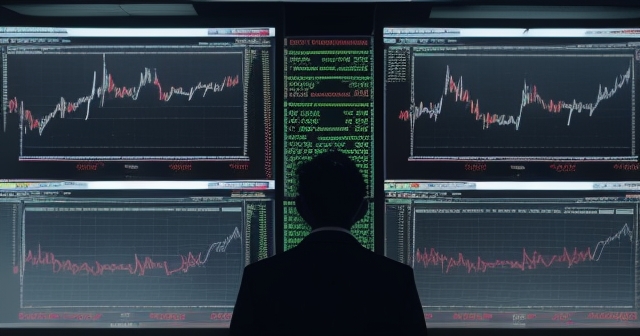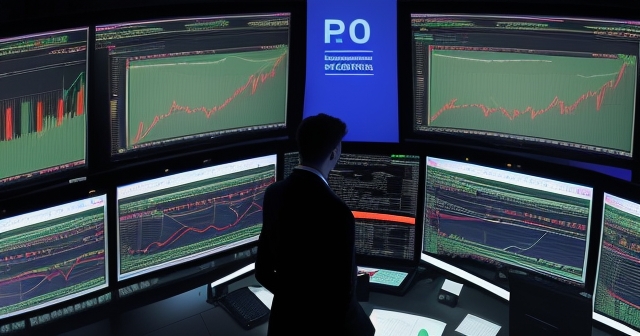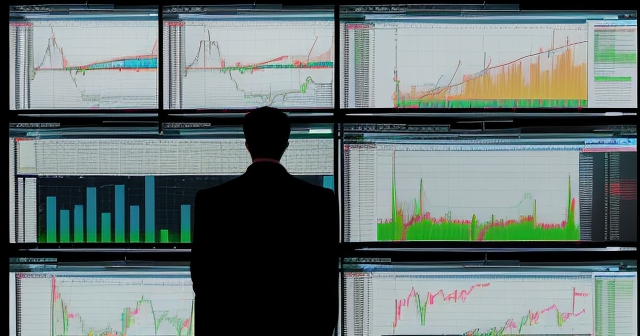Mastering MT4 Backtesting: Bridging the Gap Between Simulation and Real-World Trading Success
Embarking on the journey of financial trading, especially within the vast and dynamic world of Forex, requires more than just selecting a trading platform and opening an account. It demands a rigorous, disciplined approach to strategy development and validation. One of the most crucial steps in this process, particularly for those looking to automate their trading with Expert Advisors (EAs), is backtesting. This is where we take a trading strategy and test its potential performance against historical market data.
But backtesting isn’t a magic bullet. While tools like the MetaTrader 4 (MT4) Strategy Tester are powerful, they simulate a complex reality. Understanding how to use them effectively, interpret the results accurately, and, most importantly, recognize their inherent limitations is paramount. The goal isn’t just to see a profitable backtest report; it’s to develop a strategy that holds up when confronted with the unpredictable nature of live trading. Let’s delve deep into the world of backtesting on MT4, exploring its processes, metrics, common pitfalls, and how you can use this knowledge to build a more robust trading future.

Think of backtesting as the laboratory phase of trading. Before you deploy a new drug (your trading strategy) into the real world (live markets), you test it thoroughly in a controlled environment. Why is this non-negotiable?
-
Risk-Free Evaluation: The most obvious benefit is assessing a strategy’s potential profitability and risk exposure without risking real capital. You can iterate, refine, and discard concepts rapidly.
-
Performance Insight: Backtesting provides empirical evidence (based on historical data) about how your strategy might perform under various market conditions that occurred in the past. This gives you quantitative insights into expected returns, volatility, and potential drawdowns.
-
Parameter Optimization: Most strategies have adjustable parameters (e.g., period of a Moving Average, levels for RSI). Backtesting allows you to test different settings to find those that historically yielded the most favorable results, though caution is needed to avoid over-optimization.
-
Identifying Flaws: Running a strategy against historical data often exposes logical flaws, unexpected behaviors, or periods where the strategy performs poorly. This allows for refinement or rejection before real money is on the line.
-
Building Confidence: While not a guarantee of future success, seeing positive historical performance based on your strategy’s rules can build confidence in its underlying logic – provided you understand the limitations of the test.
For traders using or developing automated trading systems, Expert Advisors (EAs) in MT4, backtesting is absolutely fundamental. An EA is simply code that implements your trading rules. You *must* backtest this code to ensure it functions as intended and to get an initial estimate of its potential performance profile.
MetaTrader 4 provides a built-in tool specifically for automated backtesting: the Strategy Tester. This interface allows you to apply an Expert Advisor to historical data for a chosen financial instrument (like EUR/USD or Gold) over a specific timeframe and date range. Accessing it is straightforward: go to ‘View’ in the MT4 menu and select ‘Strategy Tester’, or simply press Ctrl+R.
Once the Strategy Tester window appears (usually at the bottom of your MT4 terminal), you’ll see several configuration options. Understanding each one is key to conducting a meaningful test:
-
Expert Advisor: This dropdown lists all EAs installed in your MT4 platform. Select the specific EA you want to test.
-
Symbol: Choose the financial instrument you want to test on (e.g., EURUSD, GBPJPY, XAU/USD). Ensure you have quality historical data for this symbol.
-
Period: Select the chart timeframe your EA is designed to operate on (e.g., M1, M5, H1, H4, Daily). The testing will simulate price action bar by bar or tick by tick at this resolution.
-
Model: This is perhaps the most critical setting, determining the fidelity and speed of the simulation. MT4 offers three models:
-
Every Tick: This is the most accurate model. It attempts to simulate every price change (tick) within each bar. For lower timeframes (M1, M5) and strategies sensitive to intraday price swings, this is essential. It reconstructs ticks based on M1 data, which is MT4’s highest resolution data available in the History Center. While the most accurate MT4 offers, it’s still a reconstruction and not always a perfect match to live tick feeds.
-
Control Points: Faster than Every Tick, this model uses data points from the next lower timeframe (e.g., for H1, it uses M1 data points). It’s less accurate as it skips many intermediate price movements within a bar.
-
Open Prices Only: The fastest but least accurate. It only uses the opening price of each bar on the selected timeframe. This is only suitable for strategies that strictly execute trades only at the open of a bar, independent of any price action within the bar.
-
-
Date: Define the start and end dates for your backtest period. Testing over a significant period covering various market conditions (trends, ranges, volatility spikes) is crucial.
-
Spread: You can choose ‘Current’ (uses the current spread of the symbol) or a specific value. The ‘Current’ option is generally better than a fixed value, but still doesn’t simulate the dynamic, changing spreads seen in live trading, especially during news events or low liquidity periods. This is a major source of discrepancy between backtest and live results.
-
Optimization: If checked, MT4 will run the backtest multiple times, systematically changing specified EA input parameters across a range to find the ‘best’ combination based on a chosen optimization criterion (e.g., max profit, min drawdown). Use with extreme caution due to the risk of curve-fitting.
-
Visual mode: Allows you to watch the backtest unfold on a chart, bar by bar or tick by tick. Useful for debugging and understanding strategy behavior, but slow for long test periods.
Getting these settings right is the first step towards obtaining meaningful backtest results. You are essentially telling MT4: “Apply this EA’s rules to the price movements of this instrument, on this timeframe, between these dates, simulating prices in this specific way.”

If you are looking for a platform that supports multiple trading interfaces and allows for comprehensive testing and analysis of your trading strategies, Moneta Markets is a platform worth considering. It hails from Australia and offers over 1000 financial instruments, catering to both novice and professional traders. Its support for MT4, MT5, and Pro Trader provides flexibility for implementing your validated strategies.
Your backtest is only as good as the historical data it runs on. Poor quality or incomplete data will inevitably lead to inaccurate and misleading results. MT4 relies primarily on data from its built-in History Center, but this data often has gaps, errors, or is only available in M1 resolution (meaning tick data for lower timeframes is reconstructed). For rigorous backtesting, particularly for strategies sensitive to price action below the M1 level, using external, high-quality tick data sources is highly recommended.
Here’s what you need to consider regarding data:
-
Data Source: MT4’s History Center (Tools -> History Center) is the default, but external providers offer more granular and complete tick data. Importing this data into MT4 (or using separate backtesting software) is necessary for higher accuracy.
-
Completeness: Ensure the data covers the entire period you want to test, without gaps. Missing data points can distort results.
-
Accuracy: Verify that the price data (Open, High, Low, Close, Volume) aligns with reliable sources for the specific broker or feed you intend to trade with, as different feeds can have slight variations.
-
Spread Data: Ideally, your historical data should include historical bid and ask prices (or at least the spread) to simulate execution costs more accurately. MT4’s built-in tester struggles with this, reinforcing the fixed spread limitation.
Loading quality data often involves downloading data files (e.g., .hst files for MT4) and placing them in the correct MT4 data folder, or using scripts/tools to download and format data correctly. This step, though technical, significantly impacts the reliability of your backtesting efforts.

Once you’ve configured the Strategy Tester and ensured you have decent historical data, click ‘Start’. MT4 will then simulate the EA’s trading activity over the chosen period. When finished, you’ll get several outputs:
-
Graph: A visual representation of the equity curve (your account balance over time). You want to see a smooth, upward-sloping curve, ideally without massive drops (drawdowns).
-
Results Tab: A detailed list of every trade executed by the EA during the backtest, including entry/exit prices, times, profit/loss, etc.
-
Report Tab: This is the summary report, containing the key performance metrics we use to evaluate the strategy. This is where the quantitative analysis begins.
Focusing solely on ‘Net Profit’ is a common mistake. A high net profit means little if it came with excessive risk or volatility. We need to look deeper into the metrics provided in the Report tab.
The Strategy Tester report provides several crucial metrics that offer a more holistic view of your strategy’s potential performance and risk profile. Let’s break down some of the most important ones:
-
Total Net Profit: The difference between total gross profit and total gross loss. The absolute amount, but needs context.
-
Gross Profit: The sum of all winning trades.
-
Gross Loss: The sum of all losing trades.
-
Profit Factor: Gross Profit divided by Gross Loss. A value greater than 1 indicates profitability (Gross Profit > Gross Loss). A Profit Factor of 2 means the strategy made $2 for every $1 it lost. Generally, values above 1.5 are considered good, and above 2.0 excellent, but this depends on the strategy frequency and timeframe.
-
Expected Payoff: The average profit/loss per trade. Calculated as (Total Net Profit) / (Total Number of Trades). A positive value means the average trade is profitable. This metric gives insight into the strategy’s edge per trade.
-
Drawdown (Absolute, Maximal, Relative): This is a critical risk metric. It measures the decline from a peak in the equity curve.
- Absolute Drawdown: The difference between the initial deposit and the lowest point the equity curve reached below the initial deposit.
- Maximal Drawdown: The largest peak-to-trough decline in the equity curve during the backtest. Often expressed as a percentage or monetary value. This is the most important drawdown figure, showing the maximum potential loss your capital could have endured if you started trading at an equity peak and closed at the subsequent trough.
- Relative Drawdown: The maximal drawdown as a percentage of the corresponding peak equity.
You want a high Profit Factor and Expected Payoff, but a low Maximal Drawdown, both in absolute and percentage terms, relative to the profit generated.
-
Total Trades: The number of trades executed. A high number suggests a more statistically significant test, provided the data quality is good.
-
Short Positions (won %): Percentage of profitable sell trades.
-
Long Positions (won %): Percentage of profitable buy trades.
-
Profit Trades (% of total): The Win Rate. Total winning trades divided by total trades, multiplied by 100. A high win rate is appealing but can be misleading without considering the average win vs. average loss (Risk-Reward Ratio).
-
Loss Trades (% of total): 100% – Win Rate.
-
Largest Profit Trade: The single most profitable trade.
-
Largest Loss Trade: The single largest losing trade. Helps identify if a few large losses wiped out many small gains.
-
Average Profit Trade: Average profit from winning trades.
-
Average Loss Trade: Average loss from losing trades. The ratio of Average Profit Trade to Average Loss Trade gives you the strategy’s average Risk-Reward ratio (though calculated slightly differently than per-trade R:R).
-
Maximum Consecutive Wins/Losses: Shows potential winning and losing streaks. Important for psychological resilience and capital management.
-
Sharpe Ratio: Measures risk-adjusted return. It considers the strategy’s return relative to its volatility (standard deviation of returns). A higher Sharpe Ratio indicates better return for the amount of risk taken. While less commonly discussed in basic MT4 backtests, it’s a standard metric in professional quant analysis.
Analyzing these metrics together gives you a much clearer picture than looking at profit alone. A strategy with a high profit but a massive maximal drawdown (say, 50%) is far riskier than one with slightly less profit but a 10% maximal drawdown.

Here is where we tackle the elephant in the room, a source of immense frustration for many traders: the common discrepancy between stellar backtest results on MT4 and dismal performance in live trading. It’s not just bad luck; it’s often due to the inherent limitations and simplifying assumptions of the MT4 Strategy Tester’s simulation engine.
Think of the backtest as a high-fidelity movie trailer – it looks great and exciting, but the full movie (live trading) has more unpredictable elements, unscripted moments, and costs not shown in the preview.
Major simulation flaws include:
-
Fixed Spreads vs. Dynamic Reality: MT4’s tester primarily uses a fixed spread (the one you set or the ‘current’ spread). In live trading, spreads are dynamic. They widen significantly during high volatility (like news events), low liquidity periods (session overlaps, weekends), or even just based on broker feed conditions. A strategy that relies on tight spreads or frequently trades volatile periods will show vastly different results live than in a fixed-spread backtest.
-
Idealized Execution (Slippage Myth): The backtester assumes near-perfect execution. When a trade signal occurs, it’s assumed to be filled at the exact theoretical price. In reality, particularly in fast-moving markets, your order might not get filled at the requested price. This is called slippage. Buy orders might fill slightly higher, and sell orders slightly lower. Positive slippage (getting a better price) can happen but negative slippage is more common, especially for market orders. This difference accumulates over many trades and can significantly eat into profits or exacerbate losses, a factor largely ignored by the standard MT4 tester.
-
Ignoring or Simplifying Real Costs: Besides spreads and slippage, real trading involves commissions (especially on ECN/STP accounts) and swap costs (interest paid/received for holding positions overnight). While some EAs allow inputting commission values, the simulation of these costs isn’t always perfectly aligned with a live broker’s structure. Swap rates also change. These ‘hidden’ costs can make a seemingly profitable backtest strategy unprofitable in reality.
-
Data Reconstruction Limitations: As mentioned, MT4’s Every Tick model reconstructs ticks from M1 data. This reconstruction is an approximation, not a perfect replay of actual historical tick data. Events within an M1 bar that occurred between the open and close are estimated. Strategies relying on precise entry/exit points triggered by rapid price movements within a minute may not be accurately simulated.
-
Latency and Asynchronous Reality: MT4’s backtest is a purely synchronous simulation. Signal fires -> Order executes instantly (ideally). Live trading is asynchronous. Your terminal needs to send the order request to the broker’s server, the server processes it, and sends back a confirmation. This involves network latency (delay). While minimal, this delay means your execution price might differ from the price when the signal was generated. High-frequency strategies are particularly vulnerable to this. Institutional trading systems are built to minimize and manage this latency, a complexity retail platforms like MT4 abstract away in simulation but is very real live.
-
Simplified Order Handling: MT4 backtesting typically assumes all orders are filled completely and immediately. In live trading, particularly for larger order sizes or on less liquid instruments, partial fills or requotes can occur, which the backtester doesn’t simulate.
Understanding these points is crucial. A fantastic MT4 backtest result should be viewed as a *potential* indicator, not a guarantee.
Backtesting involves testing a strategy with specific parameters. Optimization is the process of running multiple backtests while varying those parameters to find the combination that yielded the best historical performance according to some metric (e.g., highest profit factor, lowest drawdown). While optimization can help fine-tune a robust strategy, it’s a dangerous tool that often leads to curve-fitting.
Curve-fitting means finding parameters that work *exceptionally well* on the specific historical data you tested, including its random noise and quirks, but fail to perform well on new, unseen data. It’s like tailoring a suit perfectly for one specific pose – it looks great in that pose, but is uncomfortable and ill-fitting for any other movement.
How to mitigate curve-fitting?
-
Test on Multiple Data Sets: Optimize on one historical period, then backtest the ‘optimized’ parameters on a completely different period. If it performs well on both, it’s more likely to be robust.
-
Use Out-of-Sample Data: Divide your historical data into an ‘in-sample’ set (for optimization) and an ‘out-of-sample’ set (for validation). Optimize only on the in-sample data, then run a single backtest on the out-of-sample data with the optimized parameters. If the performance holds up in the out-of-sample data, it’s a good sign.
-
Favor Simplicity: Strategies with fewer parameters are generally less prone to curve-fitting than overly complex ones with dozens of adjustable inputs.
-
Look for Logical Robustness: Do the ‘optimal’ parameters make logical sense in the context of the market and the strategy? Or do they seem arbitrarily precise (e.g., a Moving Average period of 23.7 instead of a round number)?
-
Analyze Parameter Sensitivity: If slightly changing a parameter drastically alters performance, the strategy might be fragile and curve-fitted around that specific value.
Optimization should aim for robustness, not the highest possible profit factor on historical data. The goal is a strategy that captures underlying market behavior, not historical noise.
For strategies that are sensitive to volatility or operate during specific market sessions (like the London open or during major news releases such as Non-Farm Payrolls), incorporating economic news events into your backtesting consideration is important. MT4’s standard Strategy Tester doesn’t natively integrate historical news calendar data directly into the simulation process.
This means an EA might trigger a trade just before a major news release when spreads are widening and slippage is likely, but the backtest might show a perfect fill at the pre-news price with a fixed spread, leading to an unrealistic profit expectation. Strategies that aim to trade the news or avoid it need special handling in backtesting.
Workarounds often involve:
-
Coding News Filters into the EA: Program the EA to check a custom variable or historical news data feed (if available and integrated) and avoid trading during specified high-impact news periods or based on proximity to historical event times.
-
Using External Backtesting Software: More advanced backtesting platforms often allow importing or linking historical economic calendar data to simulate the impact of news more realistically (e.g., simulating spread widening or execution difficulties). While MT4 is widely used, exploring other tools or building custom solutions becomes necessary for sophisticated news-sensitive strategies.
Ignoring the impact of news in backtesting can create a significant blind spot, especially for strategies designed to operate in volatile markets.
Given the limitations of MT4 backtesting, how do you move from a promising historical performance to actual trading success? Backtesting is a necessary first step, but it’s far from the last. The bridge between simulation and reality involves rigorous forward testing.
-
Forward Testing on a Demo Account: After a successful backtest, the next logical step is to run the EA or manual strategy on a demo account under real-time market conditions. This is where you’ll encounter dynamic spreads, real-time latency, and the actual execution characteristics of your chosen broker feed. Run the strategy on demo for a significant period (weeks to months) to see if the performance aligns reasonably with your backtest expectations. Demo accounts are free and risk-free, making them ideal for this validation stage.
-
Gradual Transition to Live Trading: If demo performance is satisfactory, start trading the strategy on a live account with minimal capital. This introduces the psychological element and final execution nuances of live trading. Monitor performance closely and be prepared to pause or stop if results deviate significantly from demo/backtest expectations.
-
Expect Differences: Understand that live trading results will almost certainly differ from backtest results. The key is whether the core profitability and risk characteristics remain intact, even if the absolute numbers are lower due to real-world costs and execution variability.
-
Continuous Monitoring and Adaptation: Markets evolve. A strategy that performed well historically and during forward testing may eventually see its edge diminish. Continuously monitor its performance, understand *why* it might be underperforming, and be prepared to adapt or retire it if necessary.
This phased approach – Backtest -> Demo -> Small Live -> Full Live – helps you progressively expose your strategy to increasing levels of real-world complexity and risk, allowing for adjustments before significant capital is involved.

When you transition to live trading, selecting a broker and platform with reliable execution, competitive spreads, and robust infrastructure is crucial. If you’re evaluating options for Forex and CFD trading, Moneta Markets‘ flexibility and technical advantages are worth noting. It supports major platforms like MT4, MT5, and Pro Trader, combining high-speed execution with potentially lower spread settings, which can significantly impact live trading performance compared to backtest assumptions.
It’s useful to briefly contrast the retail trading environment, dominated by platforms like MT4, with the institutional trading world. While both use backtesting, the scale and technology differ vastly.
Institutional firms often use proprietary, highly sophisticated backtesting engines that operate directly on massive datasets of historical tick data sourced from multiple liquidity providers. These systems can simulate dynamic spreads, slippage based on historical order book depth and volatility, incorporate commissions and fees with high precision, and model the complexities of market impact for large orders.
Their live execution systems are built for speed and reliability, often co-located near exchange servers, using high-speed connections and sophisticated order routing logic (like FIX protocol interfaces) to minimize latency and manage fills. They have robust state management and error handling to cope with real-world network issues, server glitches, or partial fills – complexities that are often abstracted away in retail platforms until they cause unexpected problems in live trading.
While retail traders don’t need institutional-grade systems, understanding this difference highlights why simply relying on an MT4 backtest without accounting for its limitations is insufficient. The ‘Execution Myth’ of perfect fills and fixed costs that the MT4 tester often implies is far from the reality of live markets for any trader, retail or institutional.
Backtesting on MT4 is an indispensable tool for any serious trader, particularly those developing automated strategies. It provides a structured, risk-free environment to test your ideas against historical data, gain quantitative insights into potential performance and risk, and optimize your parameters.
However, treating backtest results as gospel truth is a recipe for disappointment. We have seen how the inherent limitations of the MT4 Strategy Tester – fixed spreads, idealized execution, data quality issues, and the lack of dynamic cost simulation – can create a significant gap between backtested success and live trading profitability. The risk of curve-fitting adds another layer of complexity.
Therefore, approach MT4 backtesting with realistic expectations. Use it as a foundational step to validate the core logic and potential of your strategy on historical patterns. Analyze the metrics critically, focusing not just on net profit but on risk (drawdown), consistency (profit factor, win rate), and the overall shape of the equity curve. Be vigilant against the allure of over-optimized, curve-fitted results.
Most importantly, recognize that the journey doesn’t end with a positive backtest report. Rigorous forward testing on demo accounts and cautious deployment with minimal capital in live conditions are essential steps to validate performance under real-world pressures and costs that backtests cannot perfectly replicate. By understanding and mitigating the limitations of the MT4 Strategy Tester, you can leverage its power effectively and build more robust, potentially profitable trading strategies that have a greater chance of succeeding when it matters most – in the live market.
| Metric | Description |
|---|---|
| Total Net Profit | The difference between total gross profit and total gross loss. |
| Gross Profit | The sum of all winning trades. |
| Gross Loss | The sum of all losing trades. |
| Profit Factor | Gross Profit divided by Gross Loss. |
| Sharpe Ratio | Measures risk-adjusted return based on the strategy’s return relative to its volatility. |
| Maximal Drawdown | The largest peak-to-trough decline in the equity curve during the backtest. |
backtest mt4FAQ
Q:What is backtesting in trading?
A:Backtesting is the process of testing a trading strategy on historical data to evaluate its potential performance before live execution.
Q:What are common pitfalls of backtesting?
A:Common pitfalls include over-optimization, reliance on low-quality historical data, and failing to account for real-world trading costs and conditions.
Q:Why is forward testing necessary?
A:Forward testing on a demo account is essential to validate the strategy under real-time market conditions and assess execution without risking real capital.
